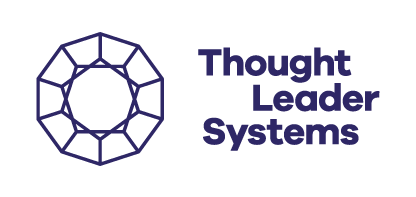Experts see inbound marketing as a modern way of acquiring customers. The basic idea here is that the customer is looking for a specific product or service anyway. If you create high-quality and easy-to-find content through good inbound marketing, the customer will automatically approach you without having to be convinced first.
As high-quality content plays the main role in inbound marketing, inbound marketing is often used synonymously with content marketing. Content marketing, search engine optimisation (SEO) and social media marketing are individual components of inbound marketing.
Inbound-Marketing: How it works
Content is king in inbound marketing. Good content can consist not only of high-quality, exciting articles, but also blogs, videos, whitepapers, podcasts, e-books, webinars, etc. Interactivity also plays a role in increasing user interest and attention and generating leads.
The benefits of good inbound marketing include:
- the increase in visitor numbers
- an increase in customers
- the increase of your turnover
- Long-term savings in advertising expenditure
So instead of drawing attention to yourself with traditional advertising, the user should be made aware of the company through good, high-quality content. The following components mentioned above are essential and should be taken into account in inbound marketing:
- Content: For a successful inbound marketing campaign, you need meaningful content. This is how you attract customers and lead them to your company website.
- SEO: Search engine optimisation is essential and makes it easier for your potential customers to find you. An SEO-optimised website is ranked higher by search engines.
- Social Media: If your content reaches the social media world, it will be shared, distributed and reach more users. Social media is therefore indispensable for getting your high-quality content to as many qualified users as possible.
Inbound marketing reduces costs
If you manage to lead the potential customer to your company website using your content, you have already achieved a great deal. Advertising costs such as buying adverts or print advertising are extremely reduced with inbound marketing. Running a blog costs less than traditional marketing and social media accounts as such are free of charge.
Offer users added value throughout the entire customer experience. Interact with them via email, chat or other channels. There you can respond to the user's wishes in a more personalised way or provide further information.
The advantages are obvious: unlike traditional outbound, you don't have to fight so hard for users and launch expensive advertising campaigns. If you create content that is precisely tailored to the customer's wishes and fulfils their needs, the user will turn to your company of their own accord. If you then act interactively and support the user in every phase of their buyer's journey, you are on the right track.
The phases of inbound marketing
Pick up the customer at every point of their customer journey and provide them with support here. This will help them to make a decision and you may soon be able to welcome them as a new customer
- Awareness: The user realises that they need help with a specific topic. They begin to look into the underlying causes of their problem and gain an initial overview of suitable research paths and channels.
- Consideration: For the most effective approach, the user articulates and concretises their individual problem. To this end, they deepen their research - for example by visiting websites, blogs, etc. that seem suitable to them.
- Decision: The interested party makes a selection of potentially suitable solutions and compares their preferred providers with each other. He contacts them and initial sales negotiations can take place.
- Deployment: If a prospective customer develops into your customer, the purchase of a suitable product or service will ideally provide them with their first valuable sense of achievement. If you can then get them completely enthusiastic about your solution (e.g. with small, free goodies), the likelihood of follow-up purchases is very high. If things go really well, they will recommend your solutions to third parties, which can generate leads that are characterised by exponential growth at best.
So if your customer is convinced by your offer, he will tell and spread his positive experiences and in this way attract new, potential customers. This creates a self-perpetuating cycle in which you do not need to invest a large budget - apart from high-quality content.
Inbound marketing and content marketing go hand in hand
By the way: inbound marketing and content marketing go hand in hand. When it comes to generating website traffic and winning leads, first-class content is indispensable in inbound marketing. Good inbound marketing is based on the idea that the customer is already looking for a specific solution. By creating high-quality, easy-to-find content, you automatically attract potential customers without having to convince them first. This high-quality content can consist of various formats such as articles, blogs, videos, white papers, podcasts, e-books or webinars. Interactivity also plays an important role in increasing user interest and attention and generating leads. Inbound marketing also includes search engine optimisation (SEO) and social media marketing, as these components help to bring your high-quality content to qualified users. With inbound marketing, you can not only increase visitor numbers, but also attract more customers and increase your sales. In addition, inbound marketing reduces the costs of traditional advertising measures, as you no longer have to fight for users and run expensive advertising campaigns. Instead, you offer users added value throughout the entire customer experience and interact with them in a personalised way. By supporting the customer at every stage of their buyer's journey, you gain their trust and can win them over as new customers. If your customer is convinced of your offer, they will share positive experiences and attract new potential customers. This leads to a self-perpetuating cycle without you having to invest a large budget. Inbound marketing and content marketing are therefore essential for successfully generating website traffic and attracting leads.
By putting the customer at the centre, focusing on building trust and appreciation, organic reach and security, you create a cycle whose exponential dynamics will definitely pay off for your company.
Do you have questions about inbound marketing? Contact one of our experts. We will be happy to help you.


